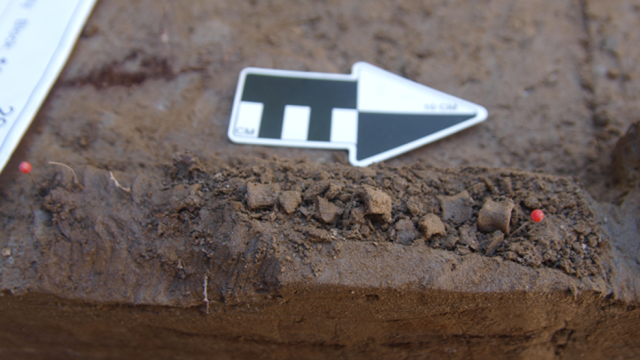Archaeologists working in central Alaska have found over 1,000 fish specimens that potentially indicate the early presence of subsistence farming among Ice Age North Americans.
By studying the remains of fish found at six archaeological sites across eastern Beringia (eastern Alaska), the archaeological team identified salmon, burbot, whitefish, and northern pike that appears to have been harvested between 13,000 and 11,800 years ago. The team’s research was published in Science Advances.
“It’s not hyperbole to say we really know next to nothing about Paleoindian use of freshwater fish. The very few early examples we have derive from non-anthropogenic contexts,” explained Ben Potter, an archaeologist at the University of Alaska Fairbanks and the study’s lead author, in an email to Gizmodo. “Our research sheds much needed light on these ancient subsistence behaviours.”
Potter said that direct evidence for freshwater fishing in the region is a few thousand years old at most, and evidence for maritime fishing off the continent dates to about 11,800 years ago.
The team studied remains at six sites along the Tanana River in Central Alaska: Upward Sun River, XBD-318, Broken Mammoth, Mead, Cook, and Hollembaek Hill. They also compared the assemblages found at those sites with other nearby sites.
The bones were zooarchaeologically analysed to determine their species, meaning the researchers carefully examined and compared their anatomical features, measurements, and physical characteristics. A biomolecular analysis of the remains was conducted by the team using stable isotope analysis, which it did to take measurements of carbon and nitrogen isotopes in the fishes’ collagen. The team also extracted DNA from some of the fish remains to identify the species of 16 specimens.
Hunting and fishing have ancient histories in the Americas; last year, archaeologists found 15,700-year-old stone projectiles in Idaho, pushing back the known ages of some of the continent’s oldest tools. In 2020, another team found that women hunted in at least some hunter-gatherer groups in South America during the early Holocene, which suggests traditional gender roles assigned to such ancient groups need revisiting. And around 2,000 years ago, the ancient Calusa people of southwest Florida designed and built elaborate “watercourts” in local estuaries to farm fish.
Fishing among Ice Age Native American groups in Alaska probably wasn’t their primary source of sustenance, as fishing likely comprised about 10% of their diets, according to Potter.
“More significant is the potential importance as buffer foods, when high-ranked prey are not secured,” he said. “This probably played into how residential base camps are selected — to take advantage of local freshwater fish as well as small game.”
The team believes that fishing may have been a response to climatological and environmental shifts as the chilly Pleistocene gave way to the warmer Holocene. As the last Ice Age thawed away in the rearview mirror, ancient humans diversified their food sources, including harvesting seasonal fish.
More evidence down the, uh, pike — is sure to clarify the importance of seasonal fish in the diets of Paleo-Americans in Beringia.
